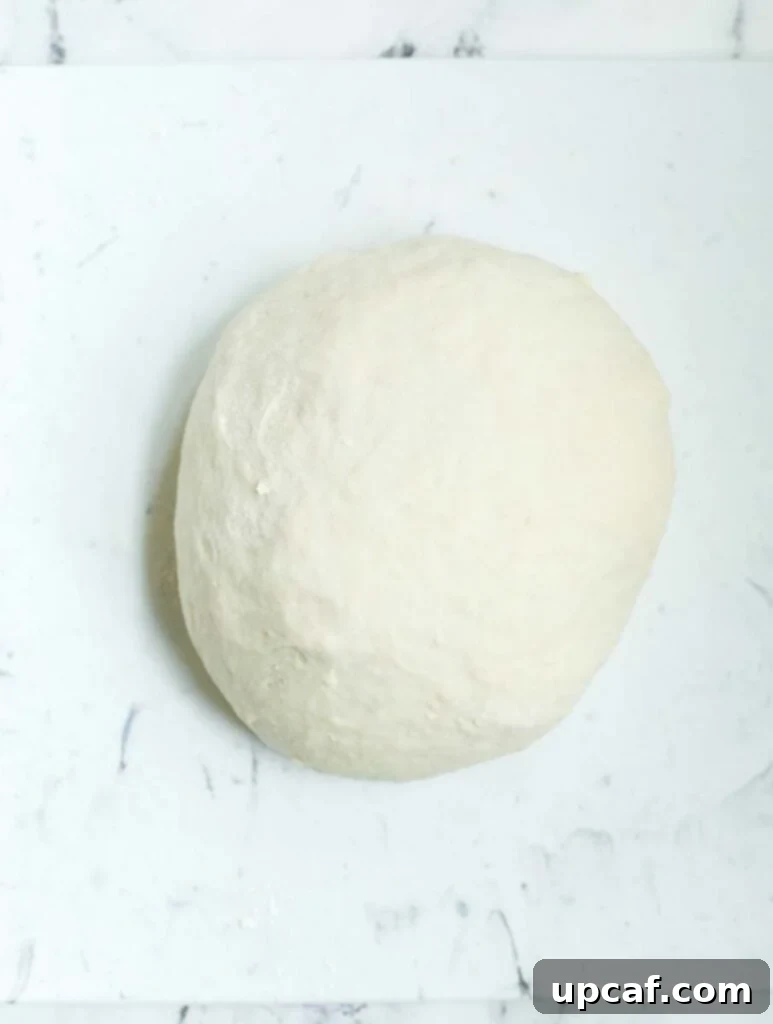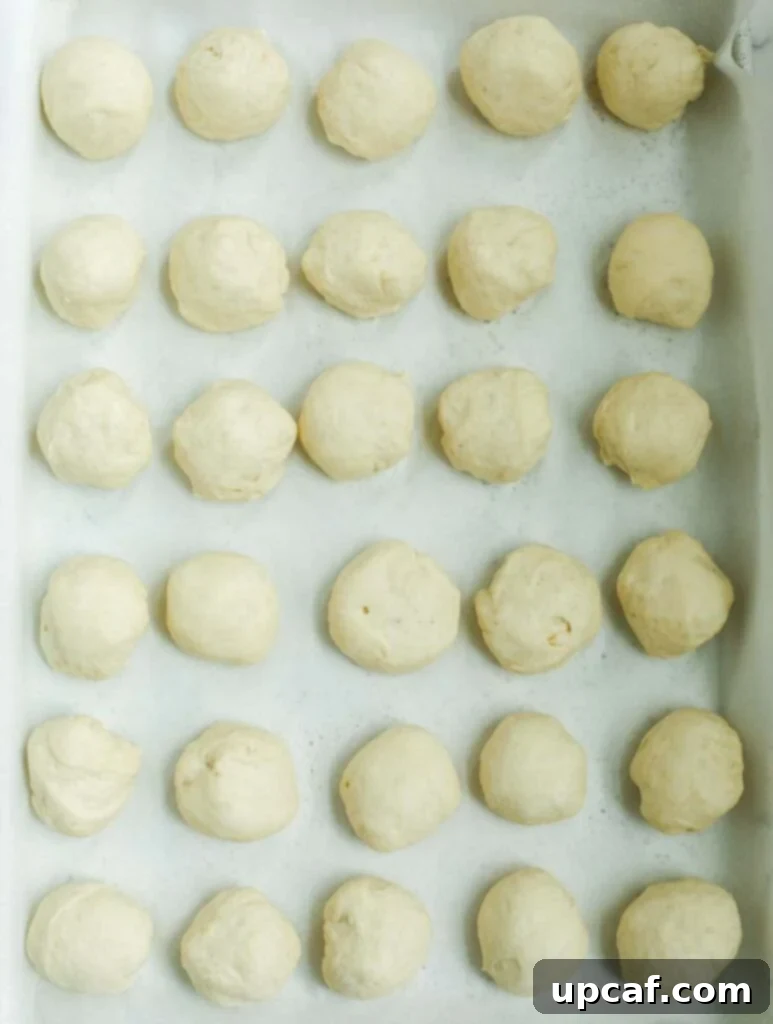Welcome to the savory world of Lebanese cuisine, where tradition and flavor unite in every bite. Among the many culinary gems, Lebanese meat pies, affectionately known as Fatayer Blahmeh (فطائر باللحم), stand out as an absolute favorite. These delightful, empanada-like pastries are a testament to the rich tapestry of Middle Eastern flavors, offering a perfectly spiced ground beef mixture encased in a tender, golden-brown dough. They are more than just a dish; they are a cherished cultural experience, often enjoyed with a refreshing side of creamy yogurt or a vibrant salad, making them a versatile option for any meal of the day.
The popularity of meat pies, or Fatayer Blahmeh, extends far beyond the borders of Lebanon. Across the globe, various cultures have embraced and adapted similar savory pastries, each adding their unique twist to the classic concept. While names and slight preparations may differ from country to country, the universal appeal of a comforting, portable pie filled with succulent meat remains undeniable. There’s no single “right” or “wrong” way to enjoy these culinary treasures; it’s all about appreciating the diverse interpretations of a beloved food.
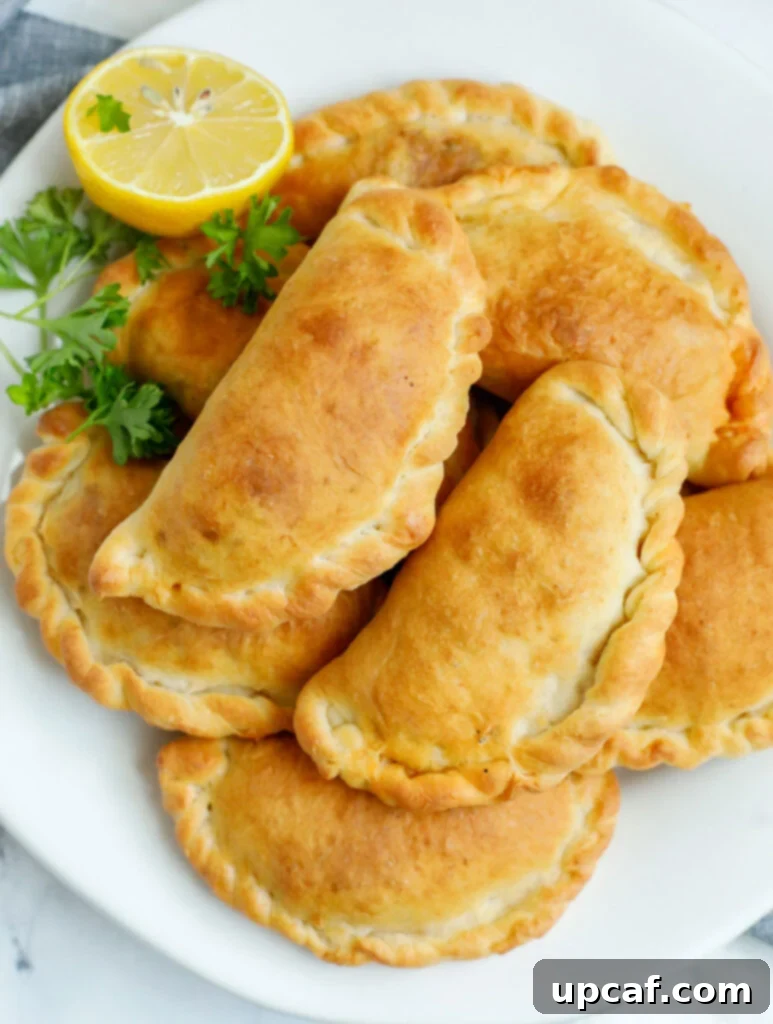
For many, Lebanese meat pies evoke a flood of beautiful childhood memories. I vividly recall buying these delicious pastries at my school cafeteria, often pairing them with a can of soda – it was, without a doubt, my favorite lunch choice. Beyond school, my mother would regularly prepare a large batch at home, transforming an ordinary dinner or snack time into a special occasion. The aroma filling the kitchen, the warmth of the freshly baked pies, and the joy of sharing them with family are memories that have stayed with me, highlighting the profound connection between food, family, and tradition in Lebanese culture.
If you’re eager to explore more authentic Lebanese recipes that bring joy to the table, my Lebanese Recipes collection offers a treasure trove of culinary delights. Dive into traditional dishes that have been passed down through generations, perfect for sharing with your loved ones. Some personal favorites include my hearty Kibbeh Bil Sanieh (Baked Kibbeh), a layered bulgur and spiced meat dish, and the ever-popular Manakeesh Zaatar, a fragrant flatbread topped with thyme and olive oil. Each recipe offers a glimpse into the vibrant and flavorful world of Lebanese cooking.
Why You’ll Adore This Authentic Fatayer Recipe
There are countless reasons why this Fatayer Blahmeh recipe will become a cherished addition to your culinary repertoire. It’s not just about the incredible taste; it’s about the ease, versatility, and the joy of creating something truly special from scratch. Here’s why this recipe stands out:
- Unleash the Versatility of the Dough: This isn’t just any dough; it’s a wonderfully pliable and forgiving base that opens up a world of possibilities. Beyond these meat pies, you can effortlessly transform it into savory mana’ish, homemade pizzas, delightful spinach pies, or sweet turnovers. Imagine making a double batch and having a foundation for multiple delicious creations throughout the week! Its robust structure and perfect consistency make it a dream to work with, ensuring successful results every time.
- Effortless Creation from Scratch: Don’t be intimidated by homemade pastries! This recipe utilizes simple, everyday ingredients readily available at any local grocery store, or perhaps already in your pantry. We’ve streamlined the process, making it incredibly straightforward for even novice bakers to achieve bakery-quality results. The joy of preparing fresh, wholesome food from scratch has never been easier or more rewarding.
- Ultimate Freezer-Friendly Convenience: Life gets busy, but delicious meals shouldn’t be a luxury. This recipe is designed with convenience in mind, making it perfectly freezer-friendly. Prepare a generous batch, bake them, and then freeze individually. This way, you can pull out a few whenever a craving strikes, or you need a quick, satisfying meal or snack. They reheat beautifully, maintaining their delicious flavor and texture, proving that homemade goodness can always be within reach.
Essential Ingredients for Your Lebanese Meat Pies
Crafting the perfect Lebanese meat pie requires two main components: a tender, airy dough and a rich, aromatic meat filling. The beauty lies in the simplicity of the ingredients, which together create a complex and irresistible flavor profile. Here’s a detailed look at what you’ll need to gather:
- Oil: For brushing the pies before baking, ensuring a beautiful golden crust, and for the initial sautéing of ingredients.
- Flour: A small amount for dusting your work surface and rolling pin, preventing the dough from sticking.
The Dough Ingredients: Building the Perfect Foundation
The dough is the heart of these savory pies, providing a soft, slightly chewy texture that perfectly complements the rich filling. Our recipe ensures a versatile and easy-to-handle dough:
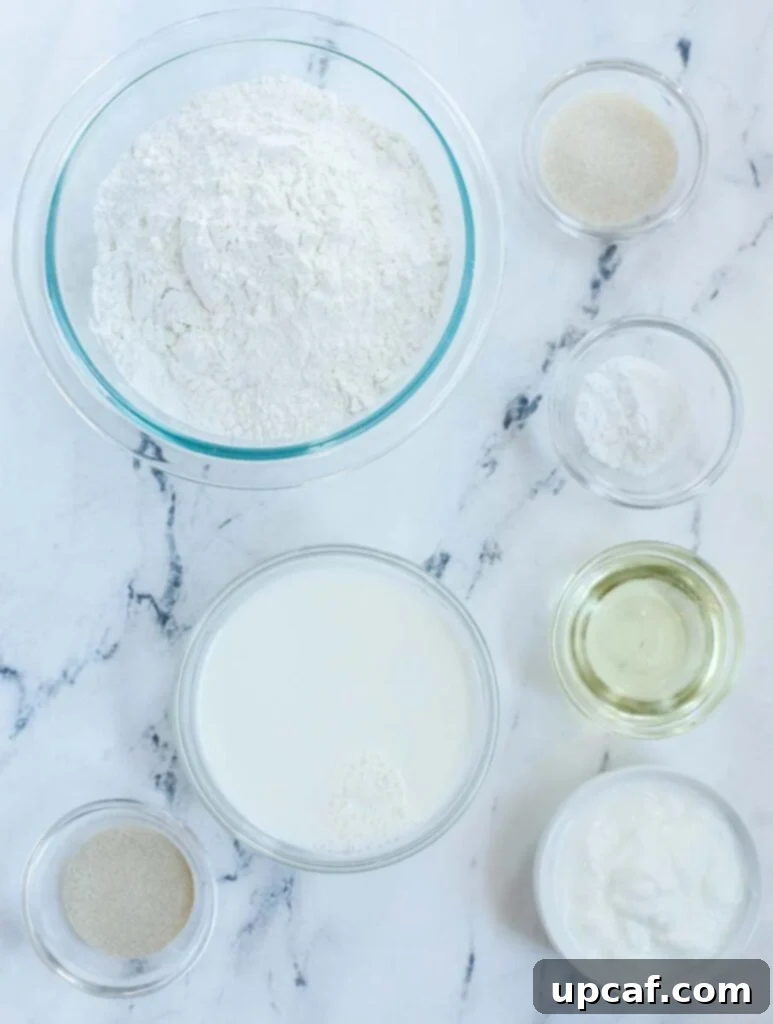
- All-purpose flour: The foundation of our dough, providing structure and texture. Sifting it ensures a light and airy consistency.
- Sugar: A touch of sweetness that helps activate the yeast and adds a subtle richness to the dough.
- Salt: Essential for enhancing the flavor of the dough and balancing the overall taste.
- Instant yeast: The leavening agent that makes the dough rise, creating a soft and fluffy texture.
- Baking powder: An additional leavening agent that contributes to the dough’s tenderness and light crumb.
- Canola or vegetable oil: Adds moisture and richness to the dough, making it more pliable and preventing it from drying out.
- Whole fat yogurt: A secret ingredient for an incredibly tender dough. The acidity in the yogurt reacts with the baking powder and yeast, resulting in a wonderfully soft and flavorful crust.
- Milk: Whole milk works best, providing the necessary liquid for the dough while adding richness and aiding in browning. Ensure it’s lukewarm for optimal yeast activation.
The Flavorful Meat Filling: A Symphony of Spices
The star of the show, this robust and aromatic meat filling is what truly sets Lebanese meat pies apart. It’s a delightful blend of savory beef, fragrant spices, and a hint of crunch from toasted pine nuts:

- Ground beef: Lean ground beef is recommended for a less greasy, yet equally flavorful filling.
- Onion: Finely diced onions provide a foundational sweetness and aromatic base.
- Pine nuts: Toasted pine nuts add a delicate crunch and nutty flavor, a classic addition to many Middle Eastern dishes.
- Olive oil: Used for sautéing the onions and beef, imparting a subtle fruity note. Light tasting olive oil is preferred.
- Black pepper: Adds a classic pungent warmth and depth to the meat.
- 7 spice or allspice: The hallmark of Lebanese cooking! 7 spice (Baharat) is a complex blend, typically including allspice, black pepper, cinnamon, cloves, nutmeg, coriander, and sometimes ginger or fenugreek, offering an unparalleled aromatic profile. Allspice can be used as a substitute if 7 spice is unavailable.
- Salt: Essential for seasoning the meat and bringing out all the flavors.
- Sumac: This vibrant, tangy red spice adds a distinct lemony tartness that brightens the entire filling.
- Red bell pepper powder or paprika: Contributes a mild sweetness and a beautiful reddish hue to the filling.
Mastering the Art of Lebanese Meat Pies: A Step-by-Step Guide
Creating these exquisite Lebanese meat pies is a rewarding culinary journey. Follow these detailed steps to ensure perfectly tender dough and a richly flavored filling, culminating in a batch of homemade Fatayer Blahmeh that will impress everyone.
Crafting the Perfect Dough
- Prepare the Dough: Begin by combining all the dry ingredients (flour, sugar, salt, instant yeast, baking powder) in a large mixing bowl, whisking them thoroughly to ensure even distribution. In a separate bowl, gently mix the wet ingredients (canola or vegetable oil, whole fat yogurt, lukewarm whole milk). Gradually add the wet mixture to the dry ingredients. Using an electric stand mixer fitted with a dough hook attachment, mix on low speed for 2-4 minutes. Continue until the dough comes together, is smooth, and pulls away from the sides of the bowl. It should be soft and slightly tacky, but not overly sticky.
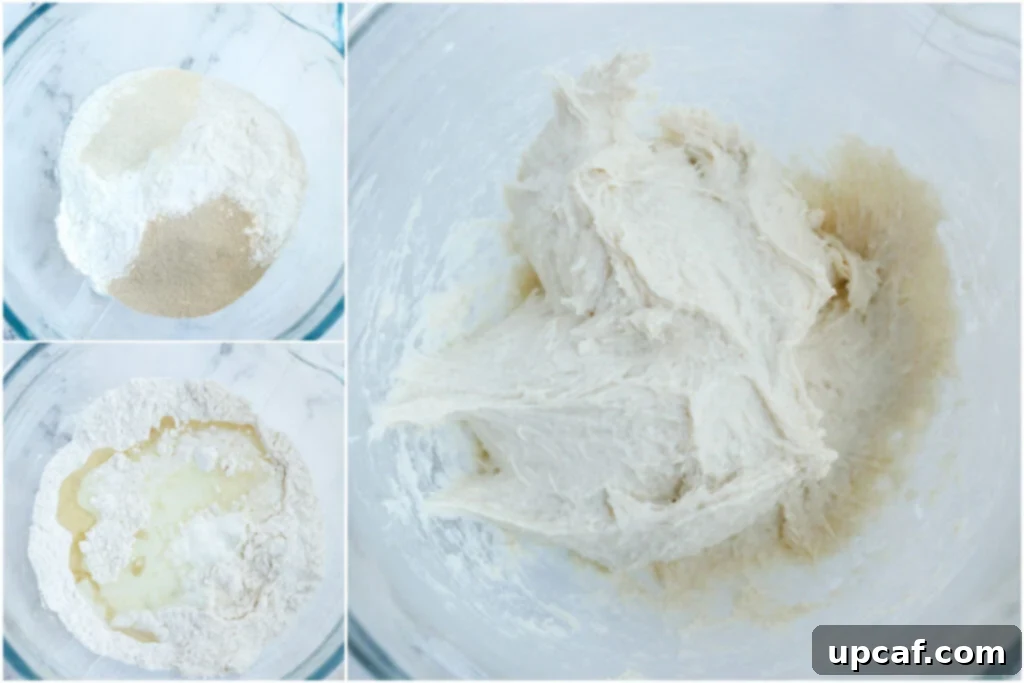
- First Rise of the Dough: Carefully remove the dough from the mixing bowl and lightly sprinkle some flour onto a clean cutting board or work surface. Knead the dough gently with your hands for about a minute, shaping it into a smooth, round ball. Lightly spray the mixing bowl with oil spray, return the dough ball to the bowl, and cover it tightly with plastic wrap or a clean kitchen towel. Place it in a warm, draft-free spot and allow it to rest and rise for approximately 1 hour, or until it has visibly doubled in size. This crucial step allows the yeast to work its magic, developing flavor and a tender texture.

Dough actively rising in a bowl, showing a successful first proof. 
A perfectly formed dough ball after initial kneading.
- Portioning the Dough: Once the dough has doubled in size, gently punch it down to release the trapped air. Transfer the dough back to your floured cutting board and knead it briefly to reshape it into a smooth ball. Now, for portioning: you can either divide the dough evenly into 32 smaller pieces for standard-sized meat pies, or for a simpler method, cut the round dough into 8 equal triangles. Then, take each triangle and divide it into 4 smaller, even portions. Feel free to adjust the size according to your preference for larger or smaller meat pies. The choice is entirely yours!

Precisely cutting dough to form individual meat pie portions. 
Neatly rolled dough balls, prepped for the next stage of preparation.
- Final Dough Rest: Roll each dough portion into a neat, small ball. Arrange these dough balls on a clean sheet pan, leaving a little space between each. Cover the sheet pan with a clean kitchen towel or plastic wrap. Let the dough balls rest for an additional 10 minutes. This short resting period, often called the “bench rest,” allows the gluten to relax, making the dough much easier to roll out and shape in the subsequent steps, and giving them a final, subtle rise.
Preparing the Flavorful Meat Filling
- Toast the Pine Nuts: In a large, deep pan, heat a small amount of olive oil over medium heat. Add the pine nuts and toast them gently, stirring continuously, until they turn a beautiful golden brown and become fragrant. Be careful not to burn them, as they can quickly go from golden to bitter. Remove the toasted pine nuts from the pan and set them aside to cool. These will add a delightful crunch and nutty flavor to your filling.
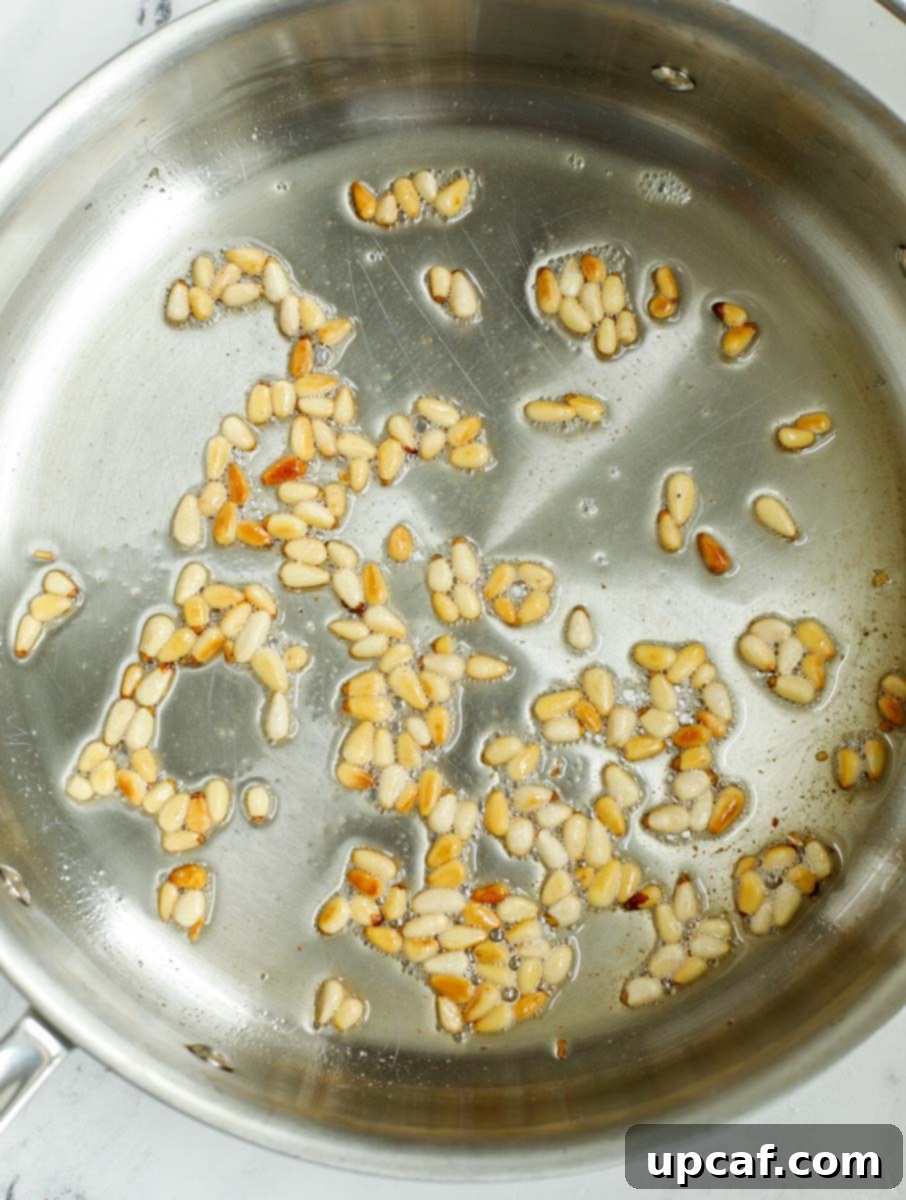
- Sauté the Onions and Cook the Beef: In the same pan, if necessary, add a little more olive oil. Add the finely diced onions and sauté them over medium heat until they become tender, translucent, and slightly golden. Remove the cooked onions from the pan and set them aside with the pine nuts. Now, add the lean ground beef to the pan. Break it up with a spoon and cook until it’s fully browned and all the liquid has evaporated. This ensures a rich, concentrated beef flavor and prevents the pies from becoming soggy.
- Combine and Season the Filling: Once the beef is cooked and dry, return the sautéed onions to the pan. Add the black pepper, 7 spice (or allspice), salt, sumac, and red bell pepper powder (or paprika). Mix all the ingredients thoroughly with the beef and onions, ensuring the spices are evenly distributed. Cook for another 1-2 minutes, allowing the flavors to meld beautifully. Remove the pan from the heat. At this stage, fold in the toasted pine nuts, mixing gently to incorporate them into the spiced beef mixture. The meat filling is now perfectly prepared and ready to stuff into your dough. Ensure it cools slightly before use.
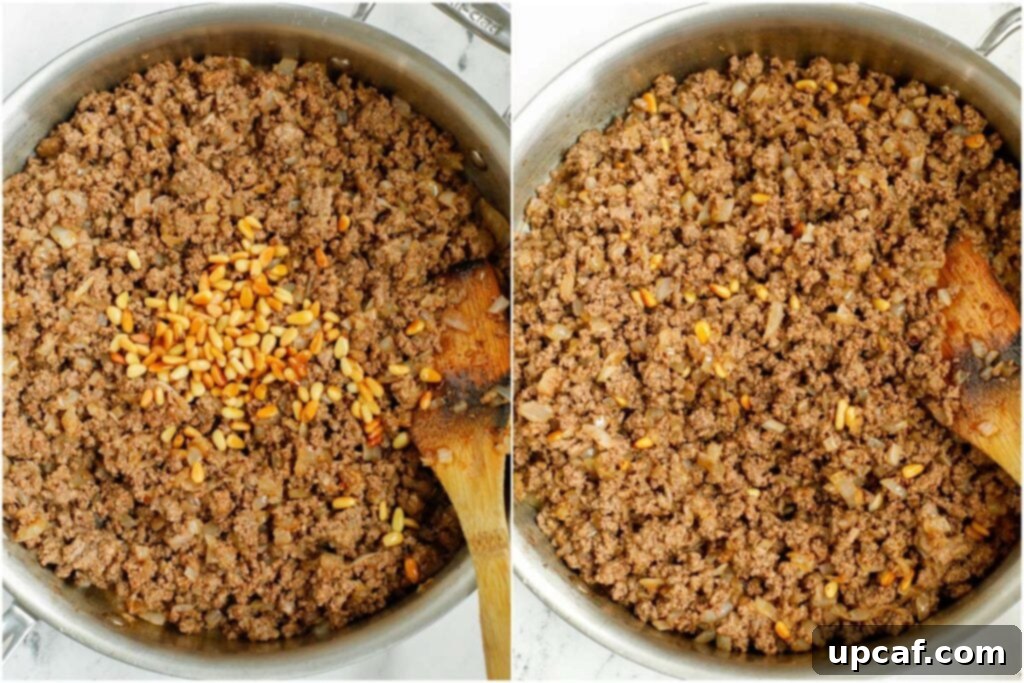
Assembling and Baking Your Lebanese Meat Pies
With the dough perfectly rested and the filling cooled and seasoned, it’s time to bring these delicious components together and bake them to golden perfection. This assembly process is where your Fatayer Blahmeh truly takes shape.
- Preheat Oven: Begin by preheating your oven to 425°F (220°C). This high initial temperature helps achieve a beautifully golden and crispy crust.
- Roll Out the Dough: Lightly dust a clean cutting board or work surface with flour. Take one of the rested dough balls and, using a rolling pin, roll it out into a thin, approximately 3-inch (7-8 cm) round circle. Aim for an even thickness to ensure uniform baking.

- Fill and Seal the Pies: Place about a tablespoon (a regular eating spoon, not a measuring spoon, for a generous portion) of the prepared beef mixture onto one half of the rolled-out dough circle, leaving a small border around the edges. Carefully fold the other half of the dough over the meat filling, creating a crescent or half-moon shape. Gently press down on the edges to seal the pie, ensuring the filling is completely enclosed. For an attractive finish and a secure seal, you can either continuously fold and crimp the dough edges over your finger to create a decorative pattern (as often seen in traditional Fatayer) or, for a faster and equally effective method, simply use the tines of a fork to press down and seal the edges all around. I personally find the fork method much quicker and easier!
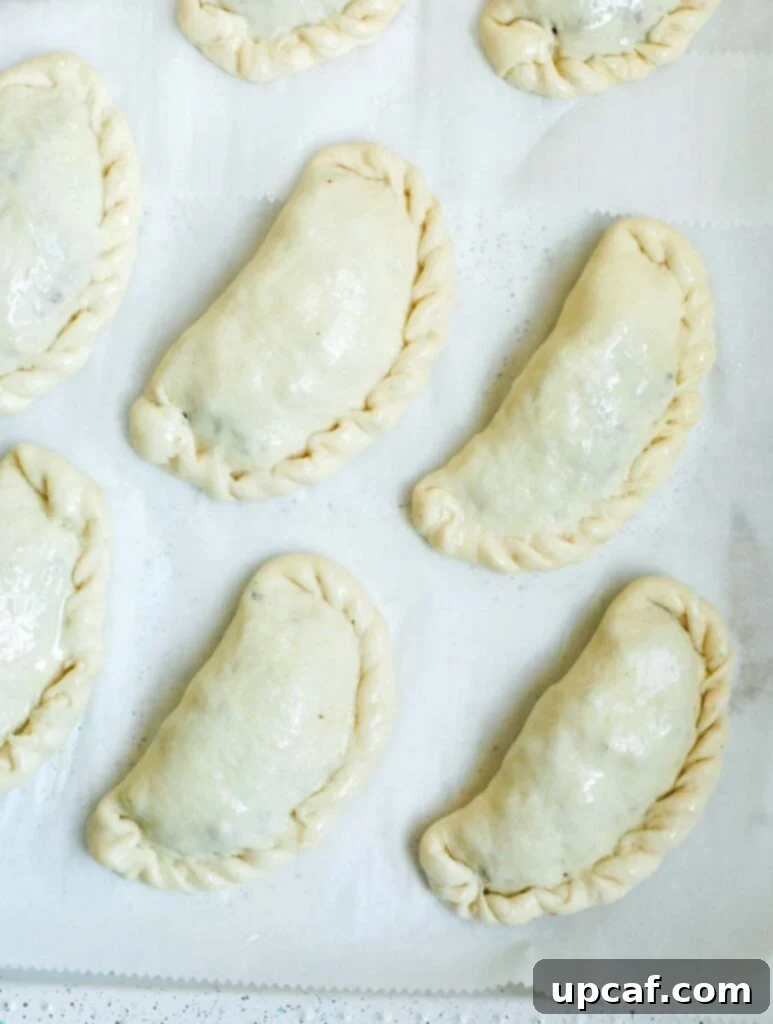
- Bake to Golden Perfection: Arrange the assembled meat pies on a non-stick baking pan lined with parchment paper, ensuring they have enough space between them. Lightly brush the tops of the pies with a little oil – this helps achieve that desirable golden sheen and crisp texture. Transfer the pan to your preheated oven and bake for approximately 15 minutes, or until the pies are puffed up and have turned a light golden brown. If you desire a deeper golden color on top, you can turn off the bake setting and briefly switch on the top broiler for about 1 minute. Watch them very carefully during this broiler step, as they can burn quickly.

- Final Touch and Serving: Once removed from the oven, immediately brush the hot meat pies lightly with a bit more oil. This final touch will enhance their beautiful glaze and add an extra layer of moisture and shine. Allow the Fatayer to cool for a few minutes before serving. While irresistible straight from the oven, a slight cooling period allows the flavors to settle and prevents you from burning your mouth!
Expert Tips and Essential Notes for Perfect Fatayer Blahmeh
Achieving outstanding results with your Lebanese meat pies is all about understanding a few key techniques and considerations. These tips and notes will help you master the recipe, offering guidance for both beginners and experienced home cooks alike.
- Convenience with Store-Bought Dough: If time is of the essence or you prefer a shortcut, readily available frozen dough can be a fantastic alternative. I highly recommend using Rhodes 36-count dinner rolls dough for this recipe. Simply remove the desired number of rolls from the freezer the night before, arrange them on a sheet pan, and let them thaw slowly in the refrigerator overnight. The next day, take them out of the fridge and allow them to rise at room temperature until they’re soft and pliable. Once risen, roll out the individual dough balls and proceed with the meat filling and assembly instructions.
- The Importance of Lukewarm Liquids: When a dough recipe calls for milk or water, always ensure the liquid is lukewarm. This means it should be comfortably warm to the touch, similar to a baby’s bathwater (around 105-115°F or 40-46°C). Using water that is too hot will kill the active yeast, preventing your dough from rising. Conversely, cold water will significantly delay or completely hinder the yeast’s activation process, resulting in a dense dough.
- Yeast Type Matters: It’s crucial not to substitute instant yeast with active dry yeast in this recipe. Instant yeast is designed to be added directly to dry ingredients and does not require proofing (activating in liquid first). Active dry yeast, however, typically needs to be dissolved in warm liquid and allowed to bloom before being added to the rest of the ingredients. Swapping them without adjusting the method will alter the dough’s rise time and overall texture, often leading to less predictable results. Stick to instant yeast for consistency.
- Finely Diced Filling: For the best texture and ease of stuffing, the ingredients for your meat filling, especially the onions, should be finely diced. If you find it challenging to chop them small enough by hand, don’t hesitate to use a food processor. A few quick pulses will achieve the perfect consistency, ensuring the filling is uniform and easy to manage within the dough.
- Serving Temperature Versatility: Lebanese meat pies are incredibly versatile when it comes to serving temperature. They are equally delicious served warm, fresh out of the oven, or at room temperature. This makes them an excellent option for picnics, packed lunches, or as part of a larger mezze spread, as they don’t necessarily require reheating to be enjoyed.
- Creative Sealing Techniques: There’s no strict rule for how to seal these charming hand pies. The primary goal is to securely enclose the filling within the dough. Whether you prefer the traditional crimped edge, a simple fold-and-press, or using a fork to create a neat pattern, choose the method that you find fastest and easiest. As long as your flavorful filling stays tucked inside during baking, you’ve done it perfectly!
- Nut-Free Option: If you or your guests have a nut allergy, rest assured that you can completely omit the pine nuts from the filling. While they add a lovely texture and subtle nutty flavor, their absence will not significantly detract from the overall deliciousness of the meat pies. The rich spices and savory beef remain the core of the flavor profile.
- Adding a Spicy Kick: For those who enjoy a bit of heat, consider incorporating some cayenne pepper or finely diced jalapeños into the beef mixture. Adjust the quantity according to your preferred level of spiciness to create a truly personalized and fiery version of these classic pies.
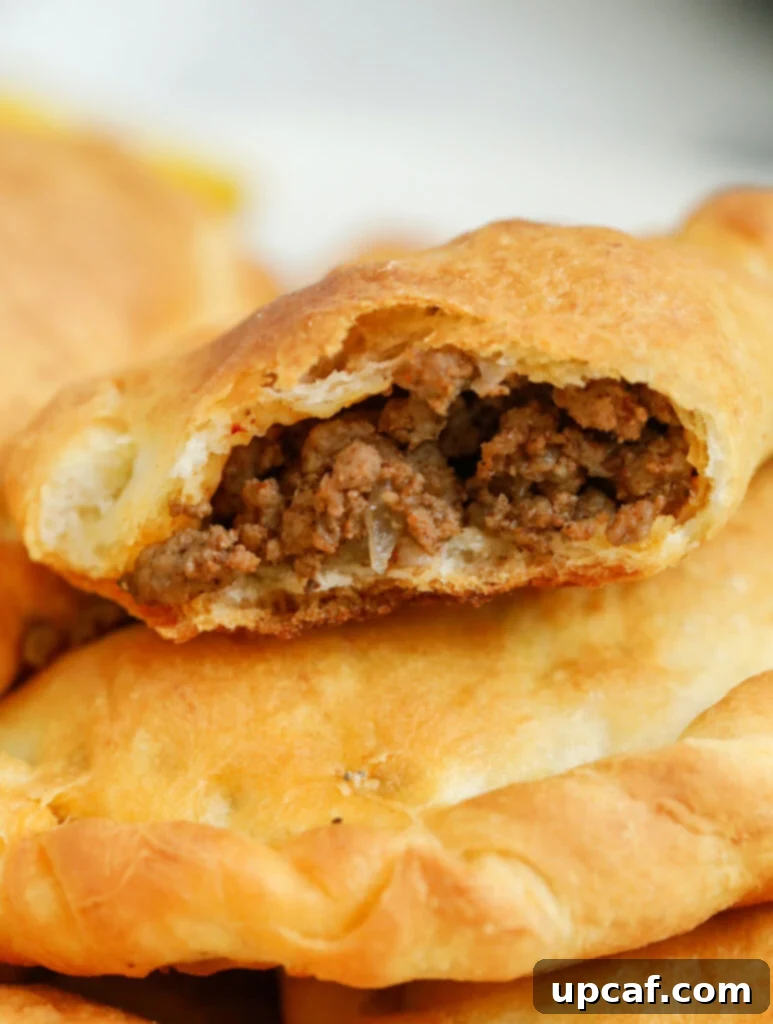
Frequently Asked Questions About Lebanese Meat Pies
Here are some common questions about Fatayer Blahmeh to help you confidently prepare and enjoy this delightful Lebanese dish.
While both are savory Lebanese meat pies, Fatayer Blahmeh and Sfeeha are distinct. Sfeeha (or Lahm bi Ajeen) is typically made with a thinner dough, often in an open-faced square or round shape where the spiced meat topping is exposed. The meat mixture for Sfeeha also often includes tomatoes, pomegranate molasses, or tamarind, giving it a tangier flavor profile compared to the more subtly spiced, enclosed Fatayer Blahmeh.
Absolutely! Lebanese meat pies are incredibly freezer-friendly, making them perfect for meal prepping. I always recommend making a large batch and freezing most of them for later enjoyment. For best results, undercook them by about 5 minutes before freezing. This way, when you reheat them, they finish baking to perfection without becoming dry. Properly stored, wrapped individually in plastic wrap and then placed in an airtight bag or container, they can last in your freezer for up to 3 months, preventing freezer burn and preserving their delicious taste.
Reheating frozen or refrigerated meat pies is simple. If frozen, thaw them in the refrigerator overnight or on the counter for a few hours. Once thawed, place them in a preheated oven at 350°F (175°C) for about 7-10 minutes, or until they are thoroughly warmed through and the crust is crisp again. Avoid microwaving them, as this can make the crust soggy.
Lebanese meat pies are wonderfully versatile and pair well with a variety of sides. A simple bowl of plain yogurt offers a refreshing contrast to the rich meat. Other excellent accompaniments include a crisp cucumber yogurt salad, vibrant Lebanese salads like Fattoush (a mixed greens salad with toasted pita) and Tabbouleh (parsley and bulgur salad), creamy Hummus, or spicy potato dishes like Batata Harra (Spicy Potatoes). Feel free to serve them with any side dish you personally enjoy!
Lebanese 7 spice, or Baharat, is a foundational spice blend in Middle Eastern cuisine, known for its warm, aromatic, and slightly sweet flavor profile. While variations exist, it typically contains a harmonious mix of allspice, cinnamon, cloves, ginger, fenugreek, nutmeg, and black pepper. This blend adds incredible depth and complexity to meat dishes. If you don’t have 7 spice on hand, a good quality allspice can serve as a suitable replacement, though it will offer a slightly simpler flavor.
More Lebanese Recipes You’ll Love
Embark on a culinary adventure with these other fantastic Lebanese recipes that are sure to delight your palate and bring the authentic flavors of Lebanon to your kitchen:
- Lebanese Tabbouleh Salad Recipe
- Lebanese Fattoush Salad
- Lebanese Hummus with Spiced Meat
- Kafta and Potato Stew
I genuinely hope you cherish every recipe I share, and this delicious Lebanese Meat Pie (Fatayer Blahmeh) recipe is no exception. Give it a try, savor the authentic flavors, and don’t forget to rate it and share your delightful creations with your friends and family!
If you make this recipe and love it, please share your experience with me on INSTAGRAM using my hashtag for a chance to be featured in my story! Also, be sure to follow Cookin’ With Mima on FACEBOOK, INSTAGRAM, and PINTEREST for all my latest social posts and exciting new recipes. Your support means the world!

Lebanese Meat Pies (Fatayer Blahmeh)
Equipment
- Rolling pin
Ingredients
- oil for brushing
- flour for dusting and rolling
The Meat Filling
- 2 lbs. lean ground beef
- 1 large onion, petite diced
- 2 tbsps. pine nuts, fried of toasted
- 2 tbsps. olive oil, light tasting
- 2 tsps. black pepper, or less to taste
- 1 tbsps. 7 spice, or all spice
- 1 tbsp. salt
- 1 tbsp. sumac
- 1 tbsp. red bell pepper powder, or paprika
The Dough
- 2¾ cup All purpose flour, sifted
- 1½ tbsp. sugar
- ¼ tsp. salt
- 1¼ tbsp. instant yeast
- ¾ tbsp. baking powder
- 3 tbsps. canola or vegetable oil
- ½ cup whole fat yogurt
- 1 cup milk, whole milk, lukewarm
Instructions
The Dough
- Mix the dry ingredients in a mixing bowl and the wet ingredients in another. Then add in the wet into the dry and mix with an electric stand mixer to combine well using a flour dough hook for 2-4 minutes on low speed.
- Remove the dough from the bowl and sprinkle some flour on a cutting board. Knead the dough a little with your hands and then from a nice ball shape. Spray the bowl with some oil spray and return the dough back to the bowl. Cover and let the dough rest for 1 hour.
- When the dough rises double its size, punch it and release the air from it. Remove the dough again from the bowl and transfer to a cutting board. Sprinkle with some flour and knead to shape it again into a ball shape.
- Cut the dough evenly into 32 pieces. Another way you can do this is cut the round dough into 8 triangles and then use each of those triangles to divide the piece into 4 small portions. If you like your meat pies bigger, you can adjust the dough size. Completely up to you.
- Form the dough portions into small balls and place on a sheet pan. Cover with a kitchen towel or saran wrap and let them rest for 10 more minutes. The balls will have a final rise.
The Meat Stuffing
- Prepare the meat stuffing while the dough rises for the first hour. This way it’s ready and cools down before the dough is ready.
- In a large deep pan, bring the oil to medium heat and toast the pine nuts. Remove the pine nuts and set aside.
- Add in the diced onions and fry until tender and translucent in color. Remove and set aside.
- In the same pan over medium heat, cook the ground beef until the water has completely reduced. Then return the onions to the pan along with the spices and salt. Mix until well combined. Cook for 1-2 more minutes and remove from heat.
- Add in the pine nuts at this point and mix to incorporate with the beef mixture. The beef mixture is now ready for stuffing.
Assembly and Baking
- Preheat oven to 425 F
- Dust a cutting board with some flour and roll out one piece of dough to about 3 inches round in size.
- Add in a tablespoon of the beef mixture (normal tablespoon not measuring spoon) onto one side of the rolled dough. Fold the dough to cover the meat and press down to see the sides.
- To shape the sides, you can either continuously fold the dough over your finger and press down to make the shape shown in the photos or just simply use a fork to seal and shape the sides. Honestly, I would just use a fork. Much faster and easier.
- Repeat step 3 for the remainder of the dough. Place the meat pies onto a non stick pan lined with parchment paper. Brush with some oil and bake in the oven for 15 minutes minutes or until lightly golden. If you think you want the meat pies to be more golden in color, turn off the bake option and turn on the top broiler for about 1 minute to enhance the color on top. Keep a keen eye on them so they don’t burn.
- Once you remove the meat pies from the oven, brush them again lightly with some oil to enhance their glaze color. Allow them to cool a little before serving.
Notes
- If you don’t want to make your own dough, I recommend using the Rhodes 36 count dinner rolls dough for this recipe. Just take it out of the freezer the night before and lay them on a sheet pan and let them thaw in the fridge until the next day. Take them out of the fridge and allow them to rise, then roll out the dough and fill them with the meat filling.
- If a dough recipe calls for milk or water, always use lukewarm milk or water. Do not use hot water or cold water, as it will cause the dough not to rise or delay the process completely. Too hot water will also kill your yeast.
- Do not swap Instant Yeast for Active Dry Yeast. This will change the time the dough needs to rise.
- If you’re having trouble dicing the meat filling, like the onions, finely, you can put them in a food processor to chop it up real small!
- Fatayer can be served warm or at room temperature.
- There’s no right or wrong way to seal these hand pies. As long as your filling stays in the pie, you can fold them whichever way is fastest and easiest for you.
- If you are allergic to nuts, you can completely remove the nuts. It wont make a huge difference at all.
- You can make them spicy by adding in some cayenne pepper or some diced jalapenos to the beef mixture.
Nutrition
Carbohydrates: 11g |
Protein: 8g |
Fat: 5g |
Saturated Fat: 2g |
Trans Fat: 1g |
Cholesterol: 18mg |
Sodium: 261mg |
Potassium: 151mg |
Fiber: 1g |
Sugar: 1g |
Vitamin A: 151IU |
Vitamin C: 1mg |
Calcium: 38mg |
Iron: 1mg
Like this recipe? Rate and comment below!


